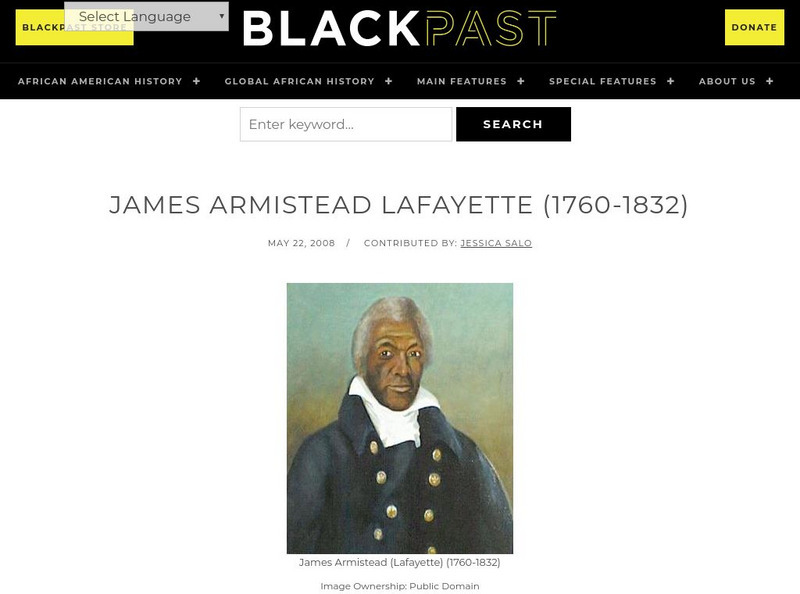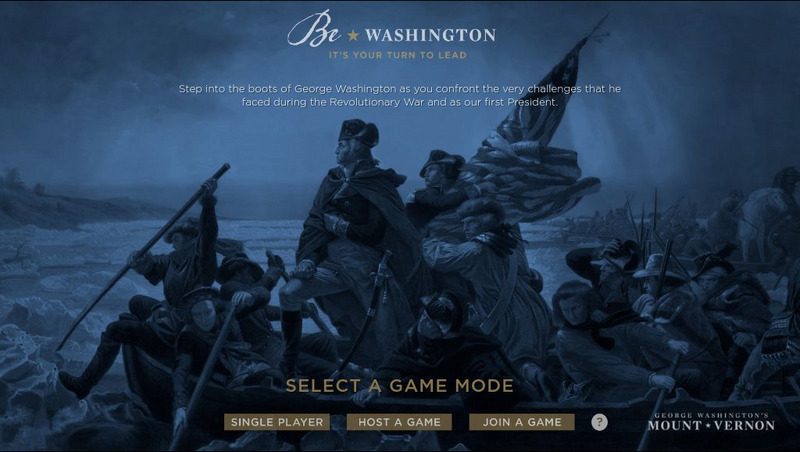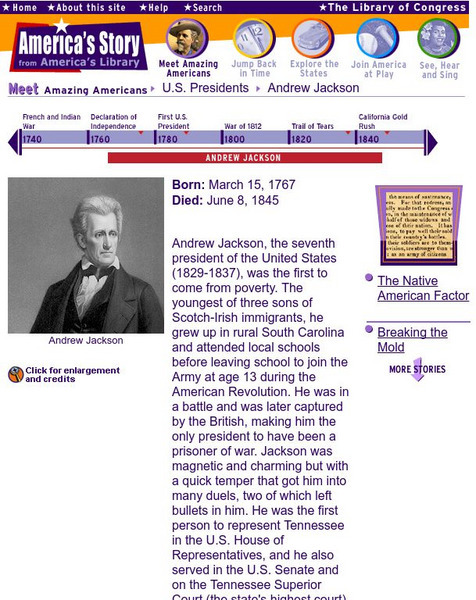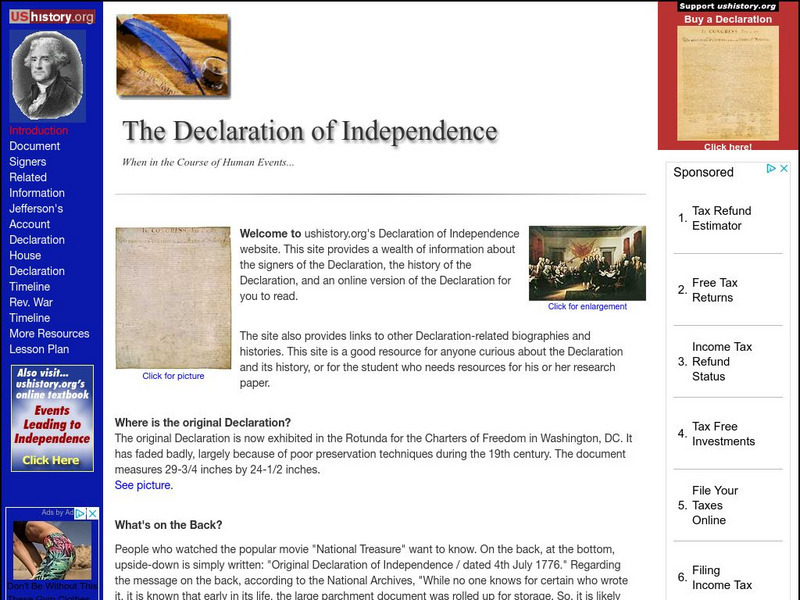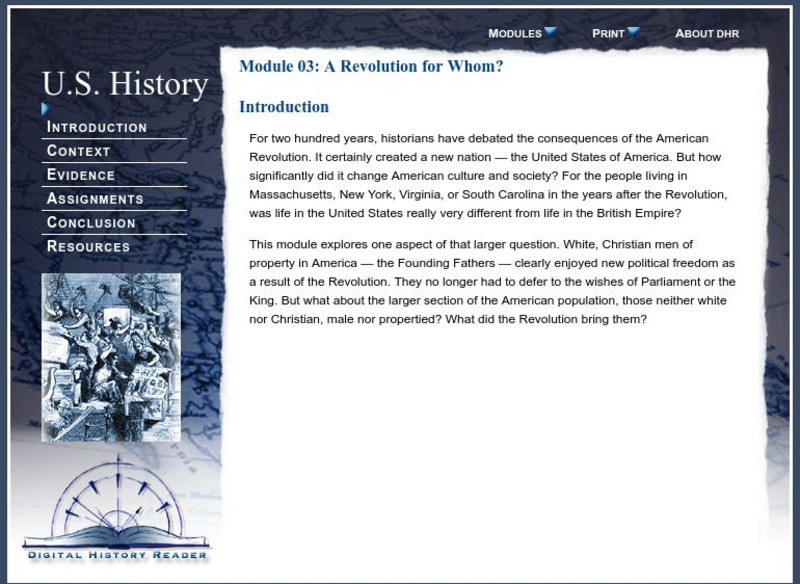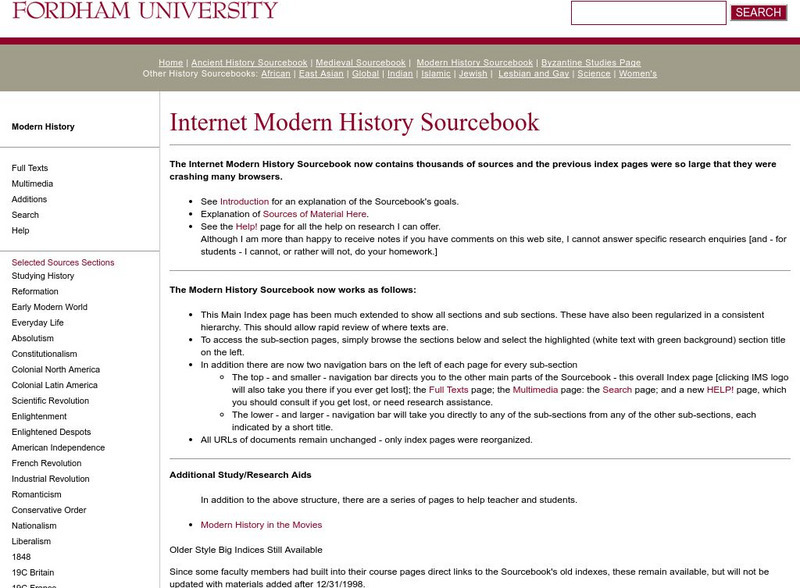Stanford University
Sheg: Document Based History: Reading Like a Historian: Loyalists
[Free Registration/Login Required] Who were the Loyalists? Why did they oppose independence? For this historical inquiry lesson, young scholars seek answers to these questions by sourcing, contextualizing, and corroborating two documents...
Teachnology
Teachnology: American Revolution Teaching Theme
Enhance classroom learning about the American Revolution by incorporating some of the resources provided in this thorough collection. Teachnology offers worksheets, lesson plans and much more.
A&E Television
History.com: Fourth of July
Great reference tool for finding information on the Fourth of July, America's birthday. Provides history of the holiday, videos, maps, and much more.
Other
Indiana Historical Bureau: George Rogers Clark: 225th Anniversary Exhibit
Through this extensive exhibit, learn about the War in the West during the Revolutionary War, George Rogers Clark's part in the campaign, and why his success was so important. Much of the information is from Clark's journals.
The Newberry Library
Newberry Library: Historic Maps: Revolutionary Boston: Old North Church
"One if by land, two if by sea." This famous quote was the direction Sexton Robert Newman was to follow by shining a lantern from the Old North Church steeple to warn the patriots that the British were coming. The church is the oldest in...
University of Maryland
Howard County Public School System: British Surrender at Yorktown [Pdf]
Based on sourcing, students will determine which of the two pieces of historical evidence depicting the same event, the surrender of General Charles Cornwallis and the British forces at Yorktown, Virginia on October 19, 1781, is the most...
Other
American Revolution: A Naval History of the American Revolution
This online reproduction of the original 1913 text by Gardner W. Allen is organized chronologically beginning in 1775 and ending with 1783. An appendix includes source citations, a list of vessels, officers, privateers and other...
Black Past
Black Past: Lafayette, James Armistead (1760 1832)
A brief biography of James Lafayette reveals that he was a spy during the American Revolution. He fooled the likes of Benedict Arnold and General Cornwallis of Britain!
Curated OER
National Park Service: The American Revolution: Haym Salomon (Ca. 1740 1785)
The story of Haym Salomon is critical to studying how the American side of the Revolutionary War was financed. His ability to manage and earn monies were his strong suit, although he was also recognized for bringing on many new members...
Other
Mount Vernon Ladies' Association: Be Washington
Step inside Washington's boots in this first-person interactive leadership experience. Players can choose various well-known scenarios where Washington had to deal with crises.
Library of Congress
Loc: America's Story: Andrew Jackson
The Library of Congress presents a brief biography of Andrew Jackson, with portraits, additional articles about his life, and photos of documents from their archives.
Library of Congress
Loc: America's Story: France Allied With Colonies (1778)
This site describes the decision for France to aid the colonies and the impact that decision had on the American Revolution.
US National Archives
Nara: Pictures of the Revolutionary War
Black and white reproductions from famous paintings by the National Archives and Records Administration. There are paintings of battle scenes, famous participants, traitors and even a perspective from the British point of view.
Independence Hall Association
U.s. History: The Declaration of Independence
The Independence Hall Association provides an online image of the original document of the Declaration of Independence.
Other
Revolutionary War Archives: Haym Salomon: Indispensable Financial Genius
Great financial broker and spy, this biography of Haym Salomon introduces his contributions during the development of a new nation in the eighteenth century.
Virginia Tech
Digital History Reader: u.s. History: A Revolution for Whom?
A module that addresses what changes in America came about as a result of the Revolutionary War. Who was impacted? How? Did it improve life in the new nation? Dive into the details of the changes through a collection of articles and...
Other
University of New Hampshire: Library: The Capture of Fort William & Mary
The Milne Special Collections presents a comprehensive account of the capture of Fort William & Mary in New Castle, New Hampshire in 1774.
Independence Hall Association
U.s. History: Welcome to Valley Forge
Washington and his men had to endure six months of harsh winter in their encampment at Valley Forge. Use this site to learn about what they had to deal with and who was there.
Curated OER
Cbc: Chief Tecumseh: A Question of Loyalties: Seeking a Nation Within a Nation
Looking at the War of 1812 from the perspective of Indian leader Chief Tecumseh, this resource presents the role of leader Chief Tecumseh in the Anglo-American war. The British and Americans both wanted to win over Tecumseh, but also...
University of Groningen
American History: Biographies: Daniel Leonard (1740 1829)
This article tells of a prominent Massachusetts lawyer who wrote a series of letters expressing the Loyalist point of view.
Digital History
Digital History: Historians on the Causes of the American Revolution [Pdf]
Read how the understanding of the causes of American Revolution has been portrayed over years by reading excerpts from writings of 19th and 20th century historians. The suggested student exercises are excellent and ask students to use...
Library of Congress
Loc: The Battle of Monmouth
Basic overview of the New Jersey battle during the American Revolutionary War, The Battle of Monmouth in 1778.
Internet History Sourcebooks Project
Fordham University: Modern History Sourcebook
A rich Fordham University site of primary source material that include full-text, and multimedia sites. There are additional study and research guides such as Modern History in the Movies.
University of Groningen
American History: Outlines: The Revolution Begins
Overview of the final events leading to military skirmishes between British soldiers and American militia leading to Second Continental Congress official declaration of war.
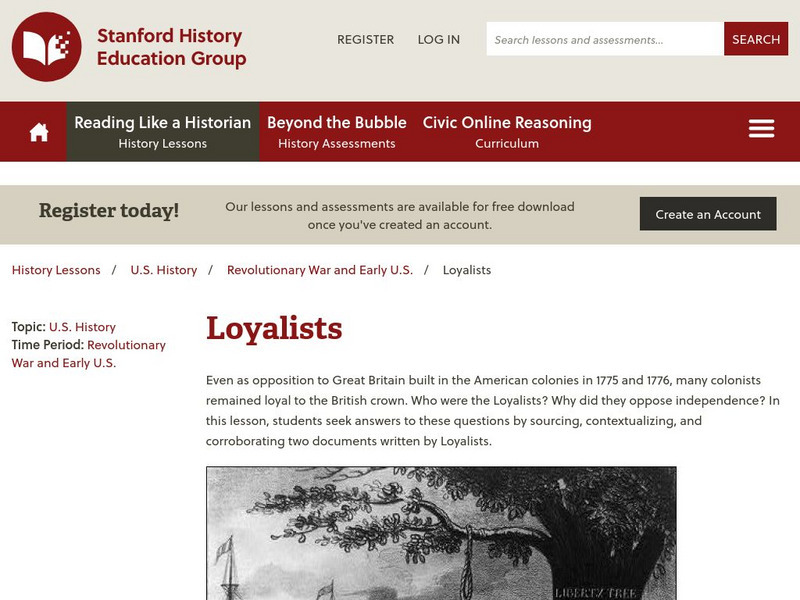




![Howard County Public School System: British Surrender at Yorktown [Pdf] Lesson Plan Howard County Public School System: British Surrender at Yorktown [Pdf] Lesson Plan](https://d15y2dacu3jp90.cloudfront.net/images/attachment_defaults/resource/large/FPO-knovation.png)
